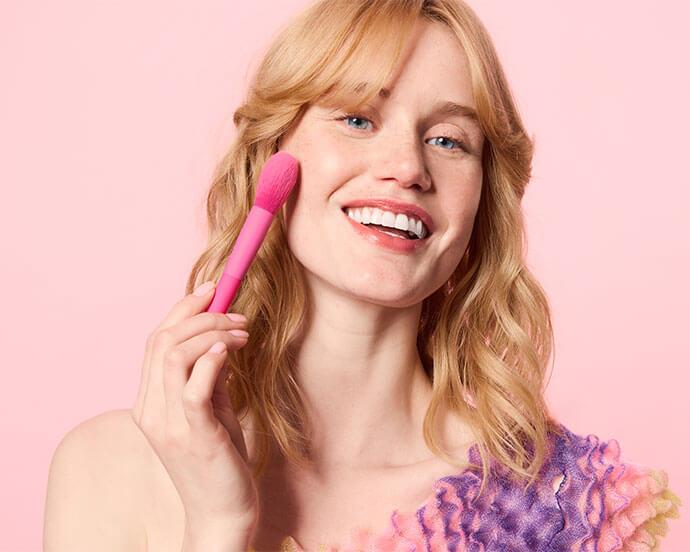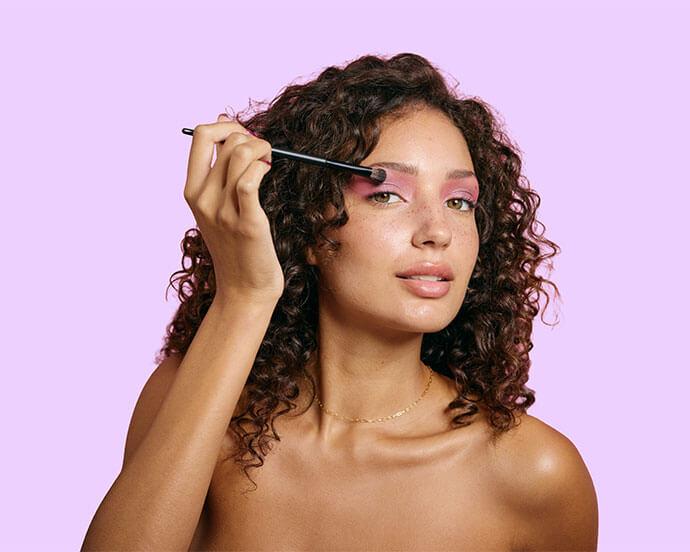10 Easy Ways Whiten Teeth at Home



Elizabeth Denton


We all dream of having a pearly white smile—and if your teeth are looking less sparkly and more yellow lately, it can be for a number of reasons. It could be that your beloved morning cup of coffee is causing your teeth to stain, or that you need to refresh your dental health and oral hygiene habits. Doctor of dental medicine, Dr. Plotnick, DMD, explains that tooth discoloration can also be a sign of other underlying health conditions such as tooth trauma, fluorosis, erosion, and more. But don’t freak out—a trip to your dentist can help identify what’s causing your teeth to look yellow and (good news!) more often than not, there are ways to get them looking bright again.


It's about glam time you treated yourself.
MEET THE EXPERT
Lawrence Weiner, DMD, is a graduate of the University of Pennsylvania School of Dental Medicine and former chief resident and attending at St. Barnabas Hospital in Bronx, New York. He currently practices in Wyckoff, NJ.
Jennifer Plotnick, DMD, is the founder of Grand Street Dental, a dental practice located in Brooklyn, NY that is re-imagining what the dental experience can be.
If you and your dentist have determined that your tooth stains are extrinsic (AKA cosmetic), there are a handful of easy ways to work your way back to whiter teeth. Not sure where to get started? Continue reading below for a quick list of different ways you can whiten teeth.
What Causes Yellow Teeth?
Once you’ve ruled out any underlying health conditions, you and your dentist will work to figure out what’s causing your tooth stains. This way, you can find the best whitening treatment for your unique smile—because there are a lot of things that can cause surface stains. “Teeth ultimately turn yellow as you get older, when the enamel wears away from chewing and exposure to acids from food and drink,” says Dr. Lawrence Weiner, DMD.
Achieving white teeth can be as simple as changing what you eat and drink—even before adding in teeth whitening products. “A few common causes of yellow teeth are genetic tooth color that runs in the family, excess fluoride, exposure to acids from food and drinks, aging, teeth grinding, and smoking,” he says. That’s just another reason to stay away from cigarettes—ick.
Easy Ways to Whiten Teeth
1. Use a teeth-whitening product.
The easiest and most straightforward way to whiten teeth is to use a teeth-whitening treatment. You can book a professional-grade whitening treatment at your dentist's office which can be pricy, but will give you pretty fast results. Got time on your lunch break? One session can often whiten your teeth up to eight shades in as little as 45 minutes.
For a more affordable alternative, try at-home whitening strips, a whitening mouthwash, whitening kits with whitening gel, or teeth whitening pens like MOON ORAL CARE Teeth Whitening Pen. These won't work as quickly as an in-office treatment, but they can still make a significant difference.
When using at-home teeth-whitening methods, be sure to read and follow the instructions. For example, don't leave your whitestrips on overnight so that they will work faster. Overexposure to a bleaching agent like hydrogen peroxide (found in most home teeth-whitening treatments) can cause tooth sensitivity and pain if you already have sensitive teeth.
2. Boost your fruit and veggie intake.
A lot of fruits and vegetables are packed with ingredients that help keep your teeth bright and your mouth healthy. Strawberries contain high levels of malic acid, an ingredient that acts as a natural astringent to dissolve stains and discoloration on the surface of teeth. Pineapples have a special enzyme called bromelain which has been shown to have brightening powers. Coarse fruits and vegetables like apples, celery, and carrots act as natural stain removers by increasing saliva production, which is essentially the mouth's self-cleaning agent.
These foods aren't going to give you the sort of dramatic results you might expect from teeth whitening products, but they're great to incorporate into your diet if you'd like to help keep teeth looking whiter and brighter for a long time.
3. Try coconut oil.
Coconut oil isn’t just for your skin and hair. This extremely versatile ingredient has also been used in an Ayurvedic oral health practice known as "oil pulling." While a number of different oils work well for oil pulling, coconut oil is a go-to thanks to its pleasant taste.
New to oil pulling? It’s super easy. Here’s how to do it: Put one tablespoon of oil in your mouth and swish it around for 15 to 20 minutes, then spit it back out. The fat in the oil latches on to the fat in germ and bacteria cells, so when you spit out the oil it takes all the bad stuff along with it. While oil pulling won’t immediately whiten your teeth, it has been proven to help with gingivitis, plaque, and halitosis (bad breath), and many people say they've seen whiter teeth as a result of this natural home remedy.
Of course, always chat with your dentist, even about over-the-counter treatments. This whitening method hasn’t been proven, but many love it for brightening their smile. If you do see yellowness fading, simply consider it a welcome bonus!
4. Rinse with apple cider vinegar.
Like coconut oil, rinsing with apple cider vinegar can slowly whiten teeth over time but can have other oral health benefits, like getting rid of bad breath-causing bacteria. It works because apple cider vinegar contains acetic acid, which removes the buildup of plaque found on teeth. But be sure to dilute it or you could damage your tooth enamel.
Ask your dentist about the best use of apple cider vinegar, but generally you want to use at least one part ACV with three parts water. Rinse your teeth like you would with a regular mouthwash and don’t brush for at least an hour to let the ACV work.
5. Avoid coffee.
We know, it’s a bummer—but coffee is a very common cause of yellowing teeth. "Frequent coffee drinking can stain your teeth due to its strong pigment and acidic properties," says Dr. Plotnick. But it doesn’t have to be permanent. "Luckily, the majority of the stains can be removed via daily brushing, flossing, and regular professional cleanings." Phew.
Dr. Plotnick suggests drinking coffee through a straw to help the coffee bypass your front teeth, which reduces contact time and minimizes teeth discoloration. "Also, since hot, highly pigmented substances stain porous surfaces like enamel more easily, you can try swapping your hot Americano for an iced coffee. Rinsing with or drinking a glass of water afterward can also help."
In addition to being mindful of how you drink your coffee, Dr. Plotnick also recommends watching out for stains from tea and red wine. She also says, "Fruit juice, vinegar, sport drinks, and sodas should be consumed in moderation as they can cause enamel erosion, making your teeth appear more yellow and gray."
6. Look for calcium-rich foods like cheese.
Yup, cheese is good for keeping your teeth bright and healthy (phew!). In general, calcium is a key nutrient for keeping teeth strong. Dairy products like cheese help produce saliva, which in turn, helps to break down enamel stains. Calcium-rich foods like cheese are also high in lactic acid, which works similarly to malic acid to dissolve superficial stains and discoloration on your teeth's surface.
7. Brush with a toothpaste that includes baking soda.
"Baking soda is incorporated in whitening toothpaste as a mild abrasive ingredient. It works really well at polishing the enamel and buffing away stains," says Dr. Plotnick. "I would avoid applying baking soda directly onto your teeth, as it’s better delivered in the form of a toothpaste."
Dr. Weiner agrees, noting that “the use of baking soda can be dangerous to your overall oral care health,” when used at home. “In fact, you are causing more harm to your teeth which can erode your enamel and leave you with irreversible effects,” he says. Instead, look for an ADA-approved whitening toothpaste with baking soda with an electric toothbrush to "literally vibrate the stains right off of your teeth,” says Dr. Plotnick.
8. Add in a toothpaste with hydrogen peroxide for extra brightening.
For stubborn discoloration, Dr. Weiner says to look for active ingredients such as hydrogen peroxide, which is used in oral care products to effectively whiten teeth. “It serves as a bleaching agent that chemically breaks down stains by penetrating the teeth and removing any compounds that may cause discoloration,” he says.
Dr. Weiner likes COLGATE Optic White Pro Series Toothpaste, which contains 5% hydrogen peroxide to go beyond the tooth’s surface to whiten teeth. “Hydrogen peroxide penetrates the enamel to remove deep stains that non-peroxide whitening toothpaste cannot reach,” he says.
9. Don’t skimp on brushing.
"Gentle brushing, twice a day with a soft-bristle toothbrush, helps to keep teeth white by removing surface stains caused by coffee, tea, red wine, and tobacco," says Dr. Plotnick. "Brushing also creates a smoother enamel surface making it harder for stains to adhere to and darken your teeth!"
So be sure to brush your teeth—but be gentle. Dr. Plotnick warns to be careful not to brush too hard, as this can actually make your teeth appear less white over time. "Aggressive brushing can wear away the outer enamel layer of your teeth, allowing the underlying, yellowish dentin layer to show through," she says.
10. Go in for that checkup.
We know—the dentist isn’t your favorite appointment to go to. In fact, it can be downright scary to sit in that chair. But the best way to have white teeth is to have healthy teeth, and that can only be achieved with regular checkups with a dentist you feel comfortable with. That way, you can ensure you’re not suffering from gum disease, tooth decay, or any other illness that can cause teeth discoloration—and even more dangerous issues.
Want more beauty tips like this with an IPSY Glam Bag? Take our Beauty Quiz now to get started. Already an Ipster? Refer your friends to earn points, which you can use toward products. Either way, don’t forget to check us out on Instagram and Twitter @IPSY.
Like this article? Share it with your friends by clicking the icons below!
Liked this post? Share!
Related Stories


How-To
Blush 101: Your Go-To Guide on How to Apply Blush for Your Face Shape
Published on Dec 12, 2025 • 12 min read


How-To
How to Apply Eyeshadow: A Beginner’s Guide to Flawless Eye Looks
Published on Dec 4, 2025 • 10 min read


How-To
How to Do Winged Eyeliner Like a Pro (No Steady Hand Required)
Published on Dec 3, 2025 • 9 min read
How-To
Try a Soft Goth Aesthetic This Season to Evoke Your Inner Wednesday Addams
Published on Feb 23, 2023


How-To
Everything You’ve Ever Wanted to Know About Mastering the Art of Bronzer
Published on Nov 5, 2025 • 10 min read


How-To
Blush Sticks 101: How to Apply Them and the Best Blush Sticks to Use
Published on Nov 5, 2025 • 13 min read


How-To
How to Treat Yourself: 39 Simple Self-Care Ideas
Published on Oct 22, 2025 • 15 min read


How-To
How to Cover Melasma With Makeup Like a Pro in 4 Simple Steps
Published on Sep 26, 2025 • 5 min read


Beauty Picked Just for You
Get 5 products worth up to $70
Plus exclusive access to epic deals up to 80% off
Starting at just $14/month. Cancel anytime.